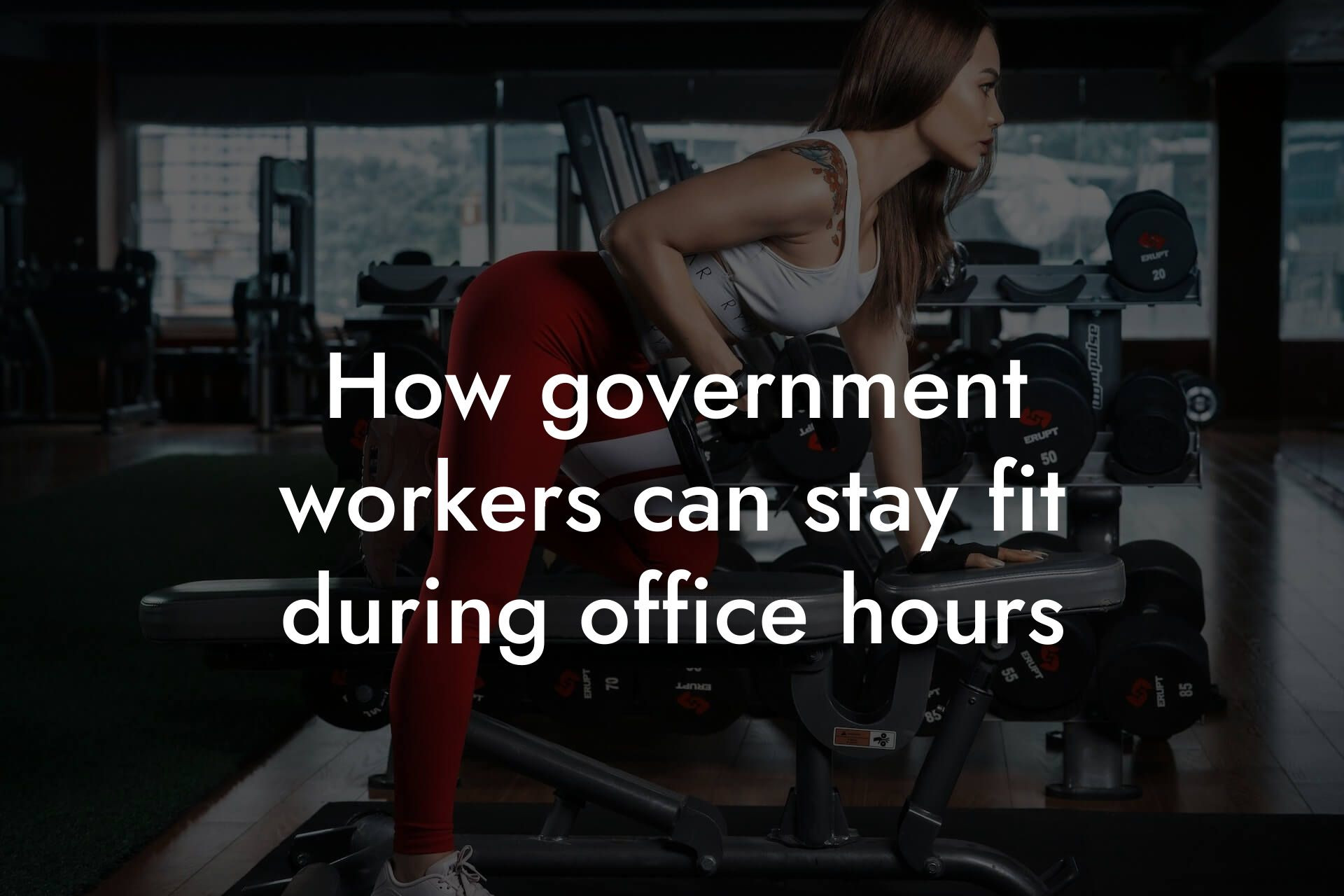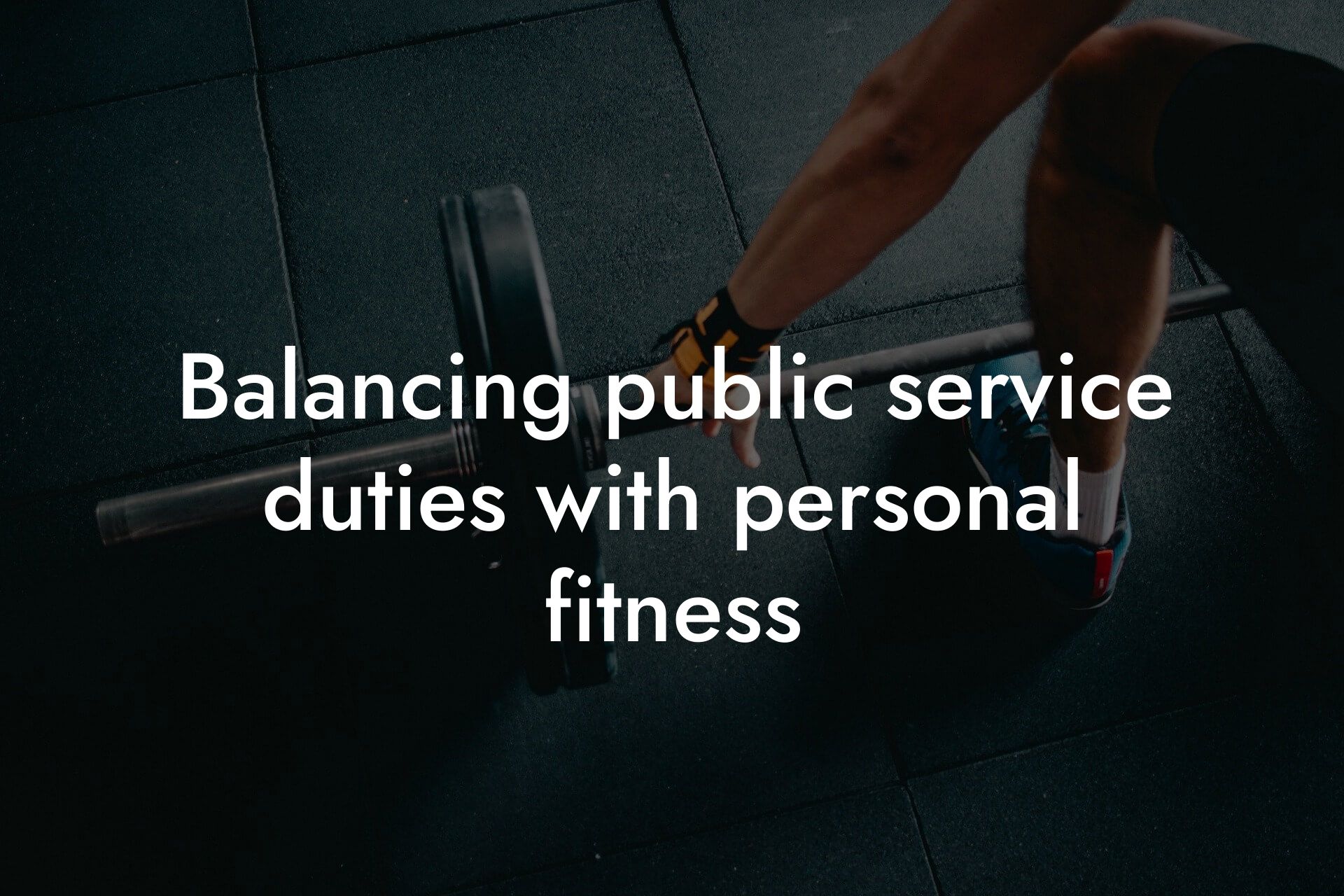As a high-earning professional, you understand the importance of being at the top of your game in both your personal and professional life. While many focus on developing their business acumen and leadership skills, it's equally essential to prioritize physical health to excel in community leadership. In this article, we'll delve into the critical role physical health plays in community leadership and how it can impact your performance, influence, and overall well-being.
Table of Contents
- What is Community Leadership?
- The Interconnection between Physical Health and Leadership
- The Impact of Physical Health on Cognitive Function
- Physical Health and Emotional Intelligence
- The Role of Body Composition in Leadership
- How DEXA Scans Can Help Community Leaders
- Practical Tips for Community Leaders to Prioritize Physical Health
- Frequently Asked Questions
What is Community Leadership?
Community leadership refers to the process of guiding, directing, and inspiring individuals or groups within a community to work towards a common goal or vision. Effective community leaders possess strong communication, problem-solving, and collaboration skills, which enable them to build trust, foster relationships, and drive positive change. However, community leadership is not just about intellectual prowess; it also requires a high level of physical energy, stamina, and overall well-being.
The Interconnection between Physical Health and Leadership
Research has consistently shown that there is a strong correlation between physical health and leadership performance. When you're physically fit, you're more likely to possess the mental clarity, focus, and resilience needed to tackle complex challenges and make informed decisions. On the other hand, poor physical health can lead to decreased productivity, increased stress, and impaired judgment, ultimately affecting your ability to lead effectively.
The Impact of Physical Health on Cognitive Function
Physical health has a direct impact on cognitive function, which is critical for effective leadership. Regular exercise, a balanced diet, and adequate sleep can improve cognitive abilities such as memory, concentration, and problem-solving. Conversely, a sedentary lifestyle, poor nutrition, and sleep deprivation can lead to decreased cognitive function, making it challenging to make sound decisions, think strategically, and respond to crises.
Physical Health and Emotional Intelligence
Emotional intelligence is a vital component of community leadership, as it enables leaders to empathize with others, manage conflict, and build strong relationships. Physical health plays a significant role in emotional intelligence, as regular exercise, meditation, and relaxation techniques can help regulate emotions, reduce stress, and increase empathy. When you're physically healthy, you're better equipped to manage your emotions, leading to more effective communication, collaboration, and decision-making.
The Role of Body Composition in Leadership
Body composition, which includes factors such as body fat percentage, lean mass, and bone density, can significantly impact your physical health and, subsequently, your leadership performance. Excess body fat can lead to decreased energy levels, reduced mobility, and increased risk of chronic diseases, ultimately affecting your ability to lead effectively. On the other hand, optimal body composition can enhance physical performance, boost confidence, and increase overall well-being.
How DEXA Scans Can Help Community Leaders
At Tano Performance Group, we understand the importance of physical health in community leadership. That's why we offer comprehensive DEXA scans, which provide a detailed analysis of body composition, including body fat percentage, lean mass, and bone density. Our DEXA scans can help community leaders identify areas for improvement, track progress, and make informed decisions about their physical health. By optimizing body composition, community leaders can enhance their physical performance, increase energy levels, and improve overall well-being.
Practical Tips for Community Leaders to Prioritize Physical Health
As a community leader, it's essential to prioritize physical health to maintain peak performance. Here are some practical tips to get you started:
- Schedule regular exercise sessions, such as cardio, strength training, and flexibility exercises, to improve physical performance and reduce stress.
- Focus on a balanced diet that includes whole foods, fruits, vegetables, and lean protein sources to optimize energy levels and overall health.
- Get adequate sleep (7-9 hours) each night to recharge and refocus.
- Practice relaxation techniques, such as meditation and deep breathing, to manage stress and increase emotional intelligence.
- Stay hydrated by drinking plenty of water throughout the day.
- Consider incorporating DEXA scans into your health routine to track progress and make informed decisions about your physical health.
In conclusion, physical health plays a critical role in community leadership. By prioritizing physical health, community leaders can enhance their cognitive function, emotional intelligence, and overall well-being, ultimately leading to more effective leadership and positive change. At Tano Performance Group, we're committed to helping high-earning professionals like you achieve optimal physical health and performance. By incorporating DEXA scans and prioritizing physical health, you can take your leadership to the next level and make a lasting impact in your community.
Frequently Asked Questions
What is the connection between physical health and community leadership?
Research has shown that there is a significant correlation between physical health and community leadership. Leaders who prioritize their physical health are more likely to possess the energy, resilience, and mental clarity needed to make informed decisions and inspire their teams. In fact, a study by the Harvard Business Review found that executives who exercise regularly are more likely to be promoted and have higher salaries.
Why is physical health important for community leaders?
Physical health is essential for community leaders because it directly impacts their ability to perform their duties effectively. When leaders are physically healthy, they are better equipped to handle the demands of leadership, including managing stress, making sound decisions, and communicating effectively with their teams.
What are the physical health challenges faced by community leaders?
Community leaders often face unique physical health challenges, including long work hours, high levels of stress, and limited time for self-care. These challenges can lead to a range of physical health issues, including obesity, diabetes, and cardiovascular disease.
How can community leaders prioritize their physical health?
Community leaders can prioritize their physical health by making small changes to their daily routine, such as taking regular breaks to stretch, scheduling time for exercise, and preparing healthy meals. They can also prioritize sleep, aiming for 7-9 hours per night, and engage in stress-reducing activities like meditation or yoga.
What role does nutrition play in physical health for community leaders?
Nutrition plays a critical role in physical health for community leaders. A balanced diet that includes plenty of fruits, vegetables, whole grains, and lean protein can help leaders maintain their energy levels, support their immune system, and reduce their risk of chronic disease.
How can community leaders stay motivated to prioritize their physical health?
Community leaders can stay motivated to prioritize their physical health by setting realistic goals, tracking their progress, and celebrating their successes. They can also find an accountability partner or join a fitness community to provide support and motivation.
What are some common physical health misconceptions among community leaders?
One common misconception among community leaders is that they don't have time to prioritize their physical health. However, small changes to their daily routine can make a significant difference. Another misconception is that physical health is only about aesthetics, when in fact, it has a direct impact on their ability to lead effectively.
How does physical health impact mental health for community leaders?
Physical health has a direct impact on mental health for community leaders. When leaders are physically healthy, they are better equipped to manage stress, build resilience, and maintain a positive outlook. Conversely, poor physical health can lead to mental health issues like depression and anxiety.
What are some physical health metrics that community leaders should track?
Community leaders should track physical health metrics like body fat percentage, bone density, and blood pressure. They should also monitor their sleep quality, energy levels, and overall sense of well-being.
How can community leaders balance their physical health with their leadership responsibilities?
Community leaders can balance their physical health with their leadership responsibilities by prioritizing self-care, delegating tasks when possible, and setting realistic goals. They can also schedule time for physical activity and self-reflection, recognizing that these activities are essential to their overall well-being and effectiveness as leaders.
What role does sleep play in physical health for community leaders?
Sleep plays a critical role in physical health for community leaders. During sleep, the body repairs and rejuvenates itself, which is essential for physical health and cognitive function. Community leaders should aim for 7-9 hours of sleep per night to support their overall health and well-being.
How can community leaders stay accountable for their physical health?
Community leaders can stay accountable for their physical health by sharing their goals with a trusted friend or mentor, tracking their progress, and celebrating their successes. They can also work with a health coach or personal trainer to provide additional support and guidance.
What are some common physical health challenges faced by female community leaders?
Female community leaders may face unique physical health challenges, including menstrual irregularities, pregnancy-related health issues, and menopause. They may also face societal pressure to prioritize their appearance over their physical health.
How can community leaders prioritize their physical health during times of stress?
Community leaders can prioritize their physical health during times of stress by engaging in stress-reducing activities like meditation or yoga, taking regular breaks to stretch, and prioritizing sleep. They can also reach out to a trusted friend or mentor for support and guidance.
What role does mindfulness play in physical health for community leaders?
Mindfulness plays a critical role in physical health for community leaders. By being present in the moment, leaders can better manage stress, make healthier choices, and prioritize their overall well-being.
How can community leaders make physical health a priority in their busy schedules?
Community leaders can make physical health a priority in their busy schedules by scheduling time for physical activity, preparing healthy meals in advance, and taking regular breaks to stretch and move. They can also prioritize sleep and engage in stress-reducing activities like meditation or yoga.
What are some physical health resources available to community leaders?
Community leaders have access to a range of physical health resources, including fitness classes, personal training, and health coaching. They can also consult with healthcare professionals, such as nutritionists and physical therapists, to receive personalized guidance and support.
How can community leaders measure the impact of physical health on their leadership?
Community leaders can measure the impact of physical health on their leadership by tracking metrics like energy levels, sleep quality, and overall sense of well-being. They can also solicit feedback from their team members and stakeholders to gain a better understanding of how their physical health is impacting their leadership.
What role does physical health play in building resilience for community leaders?
Physical health plays a critical role in building resilience for community leaders. When leaders are physically healthy, they are better equipped to handle stress, bounce back from setbacks, and maintain a positive outlook.
How can community leaders prioritize their physical health in a fast-paced environment?
Community leaders can prioritize their physical health in a fast-paced environment by taking regular breaks to stretch and move, scheduling time for physical activity, and preparing healthy meals in advance. They can also prioritize sleep and engage in stress-reducing activities like meditation or yoga.
What are some common physical health mistakes made by community leaders?
Common physical health mistakes made by community leaders include neglecting self-care, prioritizing work over physical health, and ignoring the warning signs of burnout. They may also underestimate the impact of physical health on their leadership and overall well-being.
How can community leaders create a culture of physical health within their organization?
Community leaders can create a culture of physical health within their organization by prioritizing physical health themselves, providing resources and support for their team members, and promoting a culture of wellness and self-care.
Here are some related articles you might love...
- How government workers can stay fit during office hours
- Nutrition tips for maintaining energy during long meetings
- Balancing public service duties with personal fitness
- Managing stress through physical fitness in public service
- How to stay active during legislative sessions
- How DEXA scans can benefit government professionals
- The connection between fitness and public trust
- The impact of body composition on public service effectiveness
- Quick workouts for government workers on tight schedules
Zak Faulkner
Zak Faulkner is a leading authority in the realm of physical health and body composition analysis, with over 15 years of experience helping professionals optimise their fitness and well-being. As one the experts behind Tano Performance Group, Zak has dedicated his career to providing in-depth, science-backed insights that empower clients to elevate their physical performance and overall health.
With extensive knowledge of DEXA technology, Zak specializes in delivering comprehensive body assessments that offer precise data on body fat, muscle mass, bone density, and overall physique. His expertise enables individuals to make informed decisions and achieve their fitness goals with accuracy and confidence. Zak’s approach is rooted in a deep understanding of human physiology, combined with a passion for helping clients unlock their full potential through personalised strategies.
Over the years, Zak has earned a reputation for his commitment to excellence, precision, and client-focused service. His guidance is trusted by top professionals who demand the best when it comes to their health. Whether advising on fitness programs, nutritional strategies, or long-term wellness plans, Zak Faulkner’s insights are a valuable resource for anyone serious about taking their health and fitness to the next level.
At Tano Performance Group, Zak continues to lead our Content Team revolutionising how professionals approach their physical health, offering unparalleled expertise that drives real results.




